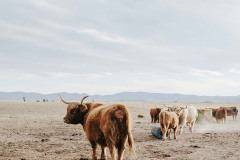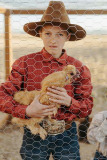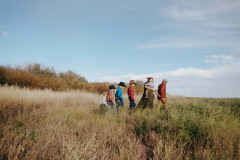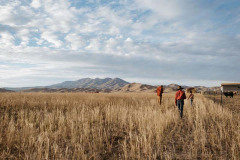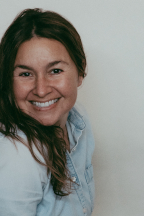No products in the cart.
Hopeful Ranching
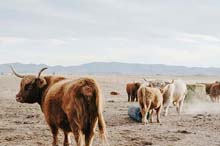
Rest and Recovery
Story and Photos by Jen Barger
“Land restoration does not happen overnight,” Sammi Fontenot tells me as we walk near the Highland cattle she and her family raise. “Slowly but surely, we’re working in the right direction.”
It’s early evening and the sun is setting behind purple hills in the tiny Camas County town of Fairfield near Soldier Mountain, an hour’s drive southwest of Sun Valley. We’re at Sammi’s Six Fold Ranch, where she does what’s calls regenerative ranching.
We’ve just met and I know very little about this type of ranching. I’ve heard the terms “sustainable” and “regenerative” thrown around at farmer’s markets and I know they’re good things—for the environment and for farming and ranching in general—but I’m not aware of its process and practices. Through Sammi, I learn how a ranch can move toward the objective of regenerating the land.
She says regenerative ranching focuses on restoring the health of the soil and the ecosystem, and it has been gaining traction in Idaho over the past ten years. Its goal is to eliminate agricultural practices that implement a toxic cycle of fertilizers, chemicals, and overuse of water, which leads to bad soil health and depletion of water supplies even while financially draining ranchers and damaging the soil’s fertility over time.
Part of the Scottish Highland herd at Fairview.

Two young roosters on the ranch.

The family takes a stroll.

The ranch is planted with a dryland grass mix.
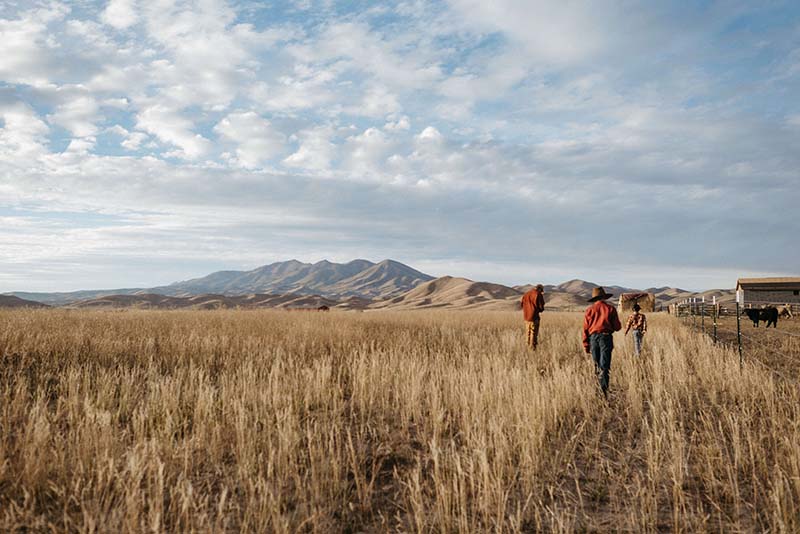
The goal of sustainability is what drew her to regenerative ranching. “When we talk about long-term sustainability,” she tells me, “we’re referring to maintaining ecological, economic, and social systems over an extended period of time without depleting resources or causing harm to the environment or society.
“By implementing regenerative practices, we’re aiming to create not only a sustainable system, but also a restorative and productive system for the future. Restoring ecosystems can improve the soil quality. In turn, our cattle are healthier, and they provide us with more nutrient-dense beef.”
After her husband Danyon medically retired from the military, the family was looking for a place where they could grow and expand, which they found in Fairfield. One of the primary reasons they chose to raise Highland cattle, which originally are from Scotland, is the innate ability of the breed to forage and browse.
“They will clean up where other breeds fail to,” Sammi explains. “We knew they were a great fit for the sustainability we were looking for. Three years ago, we started with a field of winter wheat full of weeds that had been farmed an unknown amount of time.
“We planted a dryland grass mix to establish our ecosystem’s roots. Once it was established, we began to graze our cattle through the pastures, each year making improvements to the rotational grazing system.
“In the coming year, we will be implementing a prescribed grazing program. This will give us an idea of how many acres, head of cattle, and how many days the grass can be grazed before it needs to rest and recover.”
Already the dryland grass mix and the breed of cattle have yielded encouraging results.
“Even though we chose the Highland breed for its heartiness and foraging abilities, in a short amount of time, we have noticed the welfare of our cattle is improving. They require very little maintenance and thrive in extreme climates and pasture conditions. Our soil health is also improving. Last, but certainly not least, is weed management. Each year the pastures become less and less infested with weeds, and more grasses come up.”
She tells me with better soil health, yields can improve, and water needs will decrease. One of the biggest benefits of regenerative ranching is that it allows their cattle to graze in a pattern natural to them.
All this suggests to me that as regenerative practices make their way into mainstream farming and ranching in Idaho, they might just become a key to creating sustainability. It’s a strategy that heals our land, and that looks with hope toward future generations.
This content is available for purchase. Please select from available options.
Purchase Only
Purchase Only

